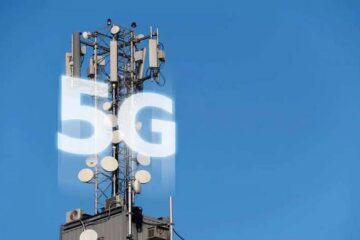Ensuring Affordable 5G Services: Government’s Assurance

The Indian government has reiterated its commitment to ensuring the affordability of 5G services as the nation gears up for their rollout by October 12. Union IT Minister Ashwini Vaishnaw affirmed that preparations are underway, with a focus on seamless implementation and consumer-friendly pricing.
Government Initiatives for 5G Deployment
In conjunction with the impending 5G launch, the government introduced “The Indian Telegraph Right of Way (Amendment) Rules, 2022” and unveiled the 5G right of work (RoW) application Form on the GatiShakti Sanchar Portal. These regulatory amendments aim to facilitate the rapid expansion of digital infrastructure, including small cells, aerial fiber, and street furniture, thereby streamlining the deployment of 5G networks.
Phased Rollout and Initial Service Areas
The rollout of 5G services will occur in phases, with the first phase targeting 13 cities across India. These cities include Ahmedabad, Bengaluru, Chandigarh, Chennai, Delhi, Gandhinagar, Gurugram, Hyderabad, Jamnagar, Kolkata, Lucknow, Mumbai, and Pune, representing key metropolitan areas where initial demand for 5G is expected to be robust.
Pricing Strategy and Industry Dynamics
While telcos like Reliance Jio, Airtel, and Vodafone Idea deliberate on their pricing strategies, industry experts anticipate varying approaches. Consumers may initially experience higher costs to access 5G services, potentially through dedicated tariff plans or bundled offers with smartphone purchases. However, tariffs are expected to decrease over time as usage grows, aligning with India’s price-sensitive market dynamics.
Potential Pricing Models and Market Outlook
Reports suggest that telecom providers may explore incremental tariff hikes or premium pricing for 5G services compared to existing 4G plans. While the adoption of premium pricing remains uncertain, it could present an opportunity for ARPU (average revenue per unit) growth in the telecom sector. Additionally, global trends indicate that 5G rollouts have not significantly increased capital expenditure for telecom companies, a trend expected to continue in India.
Anticipated Tariff Structure and Consumer Expectations
Airtel’s Chief Technology Officer, Randeep Sekhon, anticipates that 5G tariff plans in India will closely resemble existing 4G tariffs, reflecting global pricing norms. However, market dynamics and consumer preferences will ultimately shape the tariff landscape, with affordability and value proposition playing key roles in driving adoption and market competitiveness.
In conclusion, as India prepares for the advent of 5G technology, the government’s assurance of affordable services underscores its commitment to fostering digital inclusion and technological advancement while balancing consumer interests and market dynamics.












